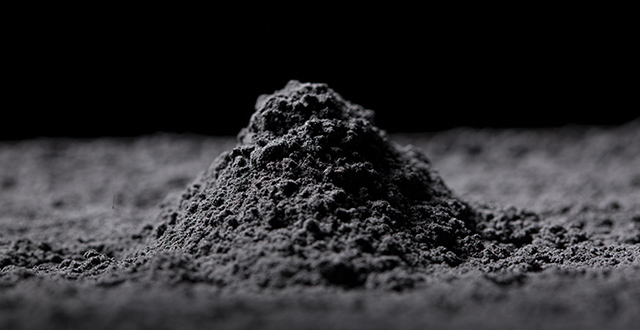Global Phenol Market Trends Q2 2025: Regional Analysis of Price Movements and Market Dynamics
The global phenol market witnessed considerable fluctuations in the second quarter of 2025, with prices varying across major regions such as North America, Europe, and Asia-Pacific (APAC). The quarter was characterized by shifting supply-demand balances, feedstock price volatility, downstream demand uncertainty, and broader macroeconomic pressures. While each region displayed unique market drivers, the overall global market sentiment leaned towards a downward adjustment compared to Q1 2025.
This article delves into the regional market trends of Phenol prices in Q2 2025, highlighting price movements, market drivers, and regional insights.
Track Real-Time Chemical Price:-https://www.chemanalyst.com/Pricing-data/phenol-17
Overview of Phenol Market Trends in Q2 2025
- North America: Phenol prices averaged USD 1040/MT, FOB Louisiana, down 9% compared to Q1 2025. The quarter displayed mixed trends—initial declines, mid-quarter recovery, and a stable close.
- Europe: Phenol prices averaged USD 845/MT, FD Hamburg, a sharp decline of 18% compared to Q1 2025’s average of USD 1030/MT. The region saw high volatility—early bearishness, mid-quarter recovery, and a softer end.
- APAC: Phenol prices averaged USD 826/MT, CFR Qingdao, down 6.5% compared to Q1 2025. The market saw a sharp early-quarter decline before gradually recovering towards late June.
North America: Stable Close After Early Declines
In North America, phenol prices in Q2 2025 reflected mixed signals. The average Phenol Price Index stood at USD 1040/MT, FOB Louisiana, marking a 9% decline from Q1 2025.
Key Market Dynamics
- Feedstock Volatility:
- The Cumene route, which dominates phenol production, was impacted by fluctuating benzene and propylene prices. Both feedstocks experienced instability due to oil market fluctuations and refinery run-rate adjustments.
- The early decline in phenol prices was directly tied to a softening of benzene and propylene costs.
- Demand Outlook from Downstream Industries:
- The demand from Bisphenol-A (BPA) and Phenolic Resins sectors displayed resilience mid-quarter, supporting a recovery.
- BPA demand was driven by polycarbonate production, especially for automotive and electronics sectors, which regained momentum after earlier slowdowns.
- Supply Factors:
- No major plant shutdowns were reported, but operational optimization by key producers helped balance regional supply-demand dynamics.
- Export opportunities to Latin America provided some relief, although limited by freight rate fluctuations.
- Quarterly Trend:
- April: A bearish start due to weak demand and cheaper feedstock.
- May: Gradual recovery supported by restocking and downstream consumption.
- June: Stabilization, with prices holding steady as supply-demand achieved near balance.
Monitor Live Chemical Price:-https://www.chemanalyst.com/Pricing-data/phenol-17
Outlook for North America
The regional market appears to be moving towards cautious stability. With feedstock costs expected to remain volatile, Q3 2025 could witness price swings. However, resilient demand from automotive and electronics industries should prevent a sharp downturn.
Europe: Sharp Decline and High Volatility
Europe’s phenol market in Q2 2025 experienced the steepest decline among the three major regions. The average Phenol Price Index was USD 845/MT, FD Hamburg, down 18% compared to Q1 2025’s USD 1030/MT.
Key Market Dynamics
- Energy Costs and Feedstock Pressures:
- Elevated energy prices in early Q2 exerted pressure on operating margins, while weaker crude oil towards mid-quarter softened benzene costs.
- This feedstock-driven volatility translated into sharp movements in phenol pricing.
- Demand Weakness:
- The construction sector, a key consumer of phenolic resins, displayed subdued activity across the Eurozone due to slower economic recovery.
- Packaging and electronics demand remained steady but insufficient to counterbalance the decline in industrial demand.
- Export Competitiveness:
- European producers faced stiff competition from Asian suppliers, particularly China, where relatively cheaper production costs undercut export prices.
- Quarterly Trend:
- April: The market began with bearish sentiment due to high inventories and weak demand.
- May: Some recovery emerged, driven by restocking in BPA and resin applications.
- June: Prices softened again as end-user demand failed to sustain momentum, resulting in a lower closing average.
Outlook for Europe
The European market continues to face structural challenges—high operating costs, sluggish demand, and competition from imports. Q3 2025 may see marginal recovery if industrial demand rebounds, but overall sentiment remains cautious.
Asia-Pacific (APAC): Recovery Towards Quarter-End
The Asia-Pacific market showed a relatively milder decline in Q2 2025 compared to Europe. The average Phenol Price Index stood at USD 826/MT, CFR Qingdao, reflecting a 6.5% decline compared to Q1 2025.
Key Market Dynamics
- China’s Influence:
- China, being the largest consumer and producer, heavily influenced APAC pricing.
- Early Q2 saw aggressive price declines due to weaker domestic consumption and oversupply.
- Demand from Downstream Sectors:
- BPA and epoxy resin demand strengthened towards the latter part of the quarter.
- The construction industry in Southeast Asia displayed signs of revival, boosting phenolic resin demand.
- Import-Export Balances:
- Export opportunities improved in late Q2, with APAC producers regaining competitiveness against European suppliers.
- India and Southeast Asia saw increased imports, driven by expanding manufacturing activity.
- Quarterly Trend:
- April: Sharp decline as Chinese inventories remained high and domestic demand faltered.
- May: Recovery signs emerged with slight improvement in downstream demand.
- June: Gradual recovery solidified, pushing regional prices towards stabilization.
Outlook for APAC
The APAC market looks relatively positive compared to Europe, with stronger industrial growth supporting demand. If China’s economy maintains stability and downstream industries sustain momentum, Q3 2025 could see modest price increases.
Comparative Regional Analysis
Price Declines Across Regions
- Europe (-18%) faced the steepest quarterly decline due to demand weakness and competitive imports.
- North America (-9%) recorded a moderate decline, cushioned by mid-quarter recovery and stable demand.
- APAC (-6.5%) showed resilience, with recovery signs emerging in late June.
Drivers of Price Trends
- Feedstock Volatility: Global crude oil and derivative fluctuations were a common driver.
- Demand Dynamics: Regional differences in construction, automotive, and electronics demand heavily influenced trends.
- Export Competitiveness: APAC producers leveraged cost advantages, while European suppliers struggled.
Broader Market Implications
- Global Supply Chain Realignment:
- With Europe struggling, APAC producers may capture greater market share in global trade.
- North America could focus on regional self-sufficiency, limiting reliance on imports.
- Downstream Industry Resilience:
- BPA, polycarbonate, and resin industries remain critical demand drivers.
- The automotive and electronics recovery in North America and Asia bodes well for phenol consumption.
- Sustainability Considerations:
- Increasing pressure to reduce emissions and adopt greener processes may reshape phenol production strategies in the medium to long term.
Conclusion
The global phenol market in Q2 2025 reflected a general downward adjustment across regions, although the extent varied. North America experienced a moderate decline with stabilization, Europe saw sharp volatility and demand weakness, while APAC demonstrated resilience with recovery signs towards the quarter-end.
Looking ahead, the balance between feedstock costs, downstream demand recovery, and export competitiveness will continue shaping the market. While short-term price volatility is likely, longer-term structural changes such as sustainability mandates and trade dynamics may redefine the global phenol industry.
Contact US:
Email-id: sales@chemanalyst.com
Mobile no: +1- 3322586602
Twitter: https://x.com/Chemanalysts



Comments
Post a Comment